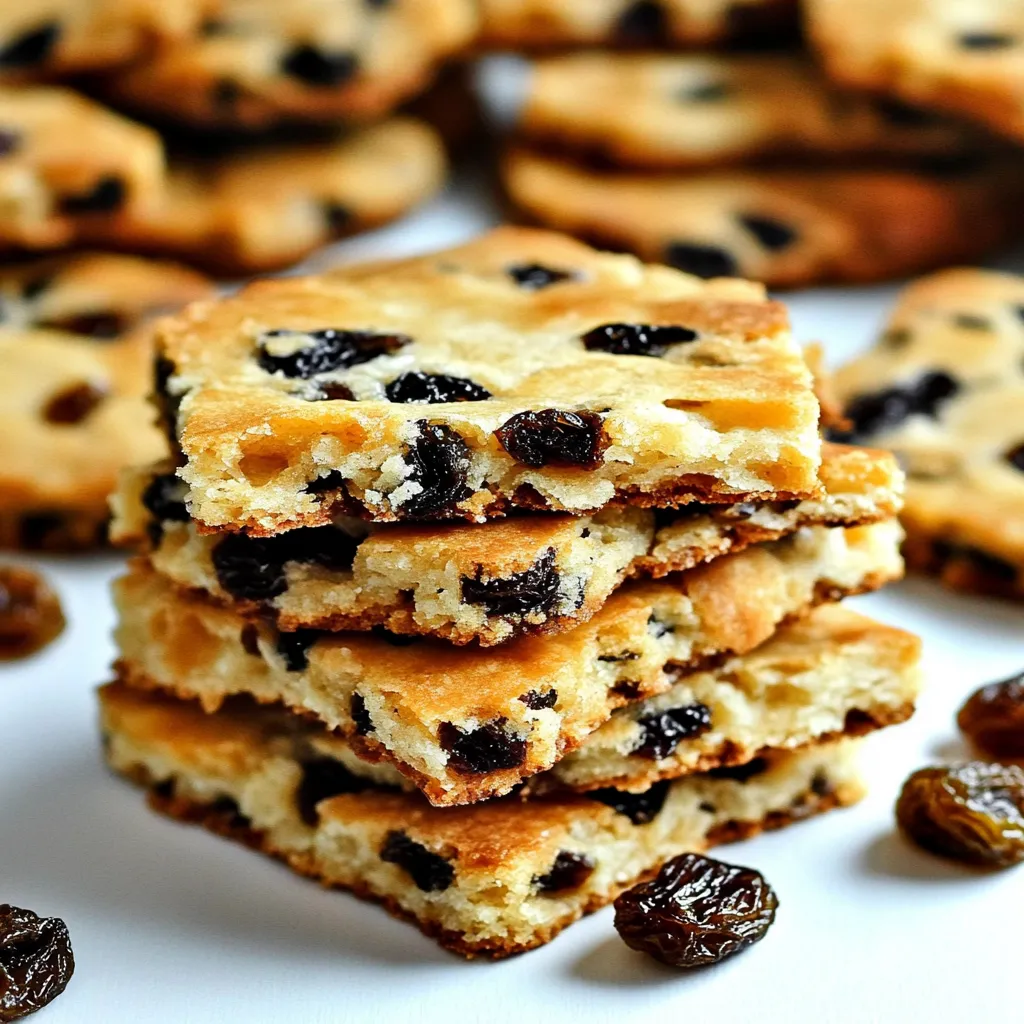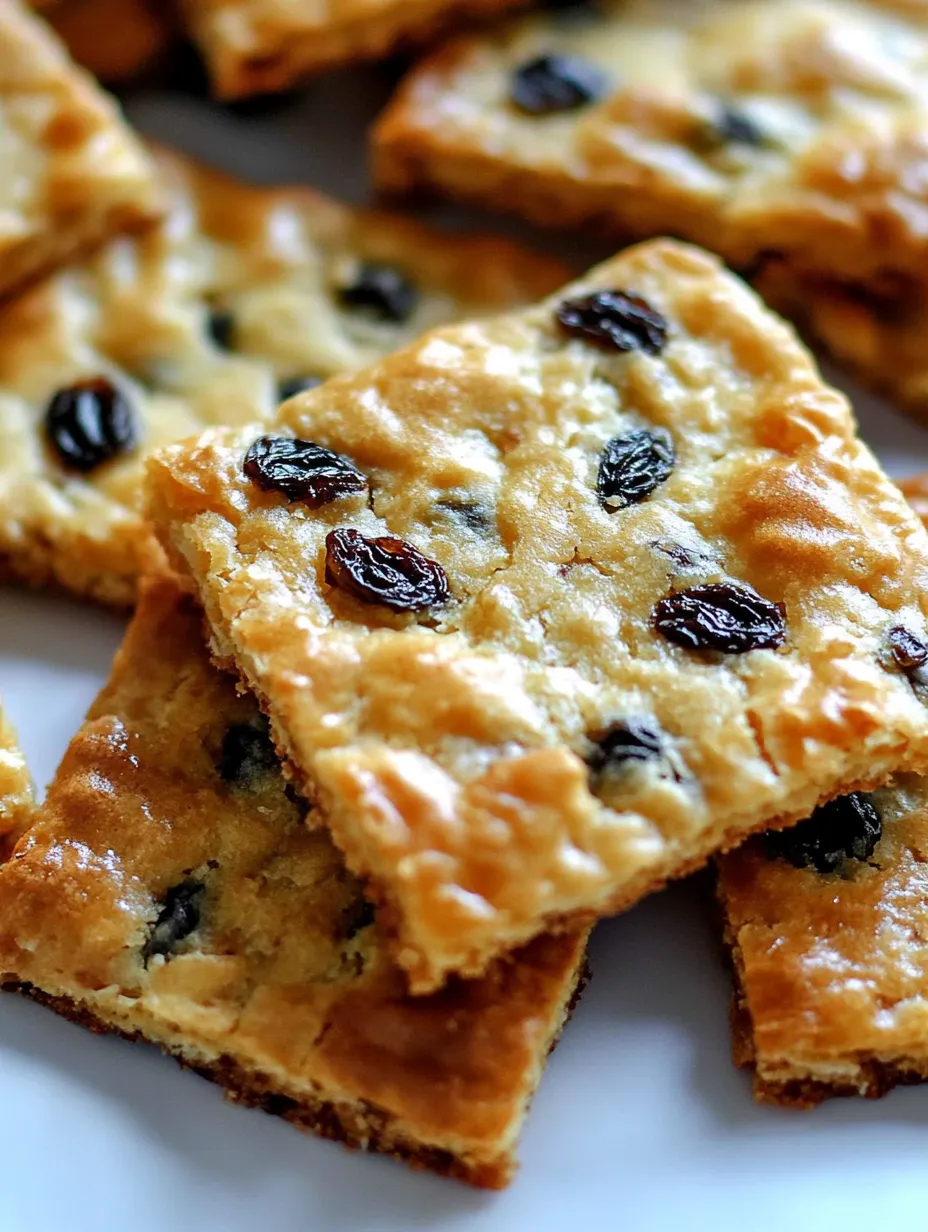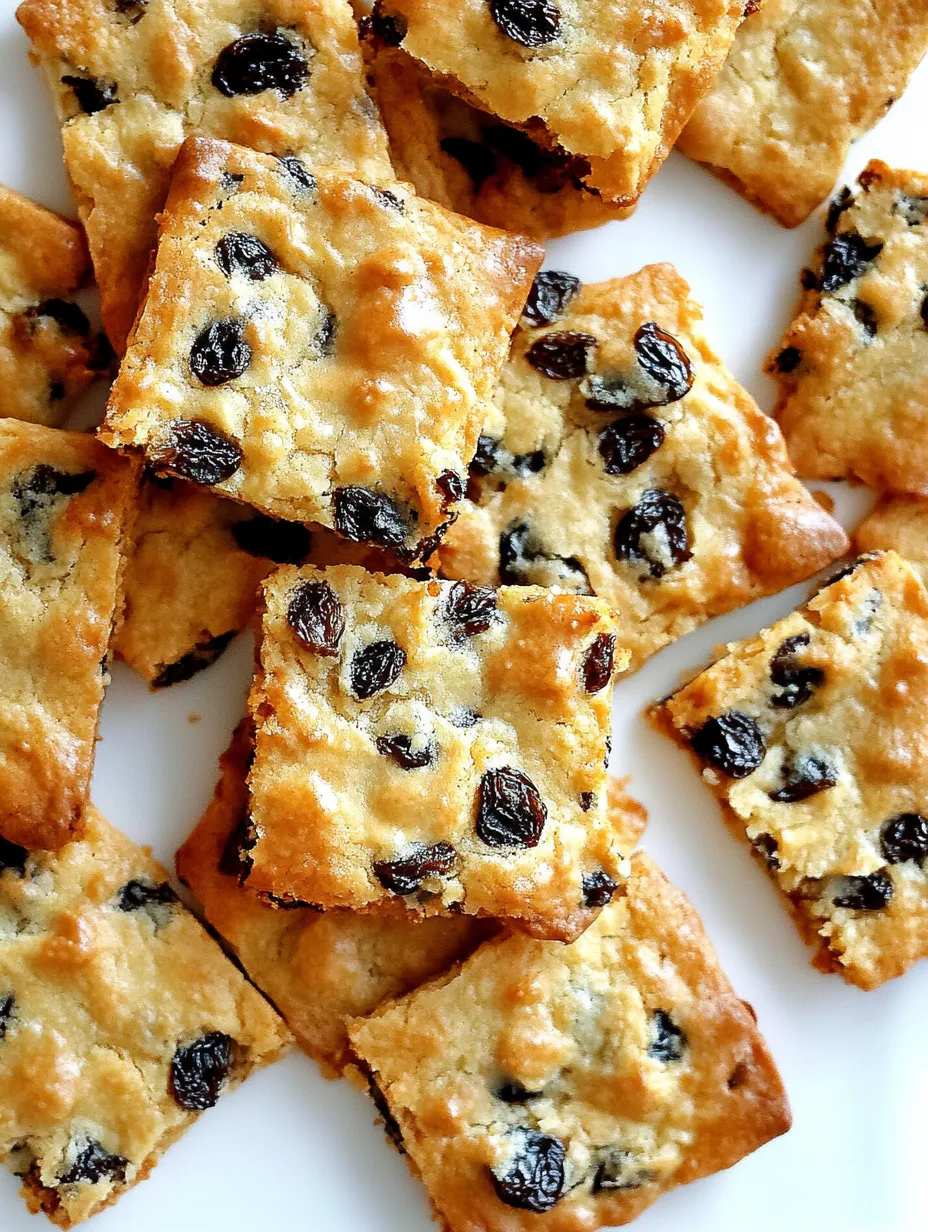 Pin it
Pin it
This nostalgic Golden Raisin Biscuit Cookie recipe recreates those beloved Garibaldi Biscuits many of us remember from childhood. With a thin, crispy texture and sweet raisin filling that peeks through the surface, these cookies bring back the simple joy of classic baking that stands the test of time.
I first attempted these after finding an old tin of Sunshine Raisin Biscuits at my grandmother's house. After several attempts to recreate that distinctive texture, this recipe finally captured the essence of those cherished cookies from my childhood teatimes.
Ingredients
- All purpose flour: creates the perfect crisp foundation for these traditional biscuits
- Confectioners' sugar: provides just enough sweetness without overwhelming the fruit
- Baking powder: gives a slight lift while maintaining the characteristic thin texture
- Cold butter: is essential for creating those flaky layers in the final biscuit
- Orange juice: brightens the flavor and complements the raisins beautifully
- Golden raisins: offer a milder, more delicate flavor than their darker counterparts
- Egg wash: creates that signature golden sheen on the finished cookies
Step-by-Step Instructions
- Mix Dry Ingredients:
- Combine flour, confectioners' sugar, baking powder, and salt in your food processor with a quick pulse until evenly distributed. This ensures all leavening is properly incorporated throughout the dough for consistent texture.
- Create the Perfect Dough:
- Add cold butter chunks to your dry ingredients and pulse until crumbly. The mixture should resemble coarse sand with small butter pieces still visible. Add orange juice and pulse just until the dough forms a cohesive ball. The key is minimal processing to maintain flakiness.
- Chill Thoroughly:
- Divide dough into two discs, wrap in plastic, and refrigerate for a full 30 minutes. This resting period allows the gluten to relax and the butter to firm up again, making rolling much easier and resulting in a more tender final cookie.
- Prepare the Filling:
- Pulse raisins briefly in the food processor until chopped but not pureed. You want texture and identifiable pieces rather than a smooth paste. This creates those signature raisin pockets throughout the finished cookie.
- Roll and Fill:
- Roll one dough portion into a thin rectangle on parchment paper, brush with egg wash, then spread half the chopped raisins over half the dough. Fold the empty half over the raisins, creating a raisin sandwich. Roll again until very thin, allowing some raisins to show through.
- Bake to Golden Perfection:
- Cut into rectangles with a pizza cutter but leave them in place for baking. Slide the entire parchment onto a baking sheet and bake until the edges turn golden brown and the surface has a warm, honeyed color. The cookies will crisp up further as they cool.
 Pin it
Pin it
You Must Know
- The thinner you roll the dough, the crispier and more authentic your biscuits will be
- These cookies actually improve with age, developing more flavor after a day or two
- Perfect for shipping to friends and family as they travel exceptionally well
My grandmother would always serve these with a cup of Earl Grey tea on Sunday afternoons. She insisted on golden raisins rather than the traditional currants, claiming they had a sunnier flavor that brightened even the dreariest winter days.
The Art of Rolling
Achieving the perfect thinness requires patience and the right technique. Always start with thoroughly chilled dough and use minimal flour for dusting. Roll from the center outward in all directions, rotating the dough occasionally to maintain an even thickness. You should be able to see the shadow of your hand through the dough when it's thin enough.
Storage Solutions
These biscuits keep remarkably well in an airtight container at room temperature for up to a week. For longer storage, arrange them in single layers between sheets of parchment paper in a tin. Their low moisture content makes them resistant to staleness, though they will gradually soften if exposed to humid conditions.
Historical Background
Garibaldi biscuits have been a beloved treat since the 1860s when they were created in Britain and named after an Italian general. Originally called "Squashed Fly Biscuits" due to the appearance of the currants, they were among the first commercially produced cookies to gain widespread popularity. This homemade version captures that historical charm while improving on the flavor of mass produced versions.
Serving Suggestions
- Pair these cookies with afternoon tea for a traditional experience
- Serve alongside a cheese board where their sweetness balances sharp cheeses
- Crush and use as a pie crust for creamy desserts
- Dip half in melted dark chocolate for an elevated treat
Pro Tips
 Pin it
Pin it
Frequently Asked Questions
- → How do you achieve thin and crispy layers?
To achieve the thin, crispy layers, make sure to chill the dough before rolling it out thinly and evenly. This prevents sticking and ensures the right texture when baked.
- → Can I use a different filling instead of raisins?
Yes, you can use sweet currants, dried cranberries, or any chopped dried fruit as a substitute for raisins.
- → What role does orange juice play in the dough?
Orange juice enhances the raisin flavor subtly and adds a delicate sweetness. It can be replaced with water if preferred.
- → What’s the best way to store these cookies?
Store fully cooled cookies in an airtight container at room temperature for up to a week to maintain their crisp texture.
- → Can I prepare the dough in advance?
Yes, you can prepare the dough a day ahead. Wrap it tightly and keep it refrigerated until you're ready to use it.
- → Why do raisins need to be chopped?
Chopping raisins ensures even distribution within the cookies, allowing the fruity texture to meld seamlessly with the flaky dough.
